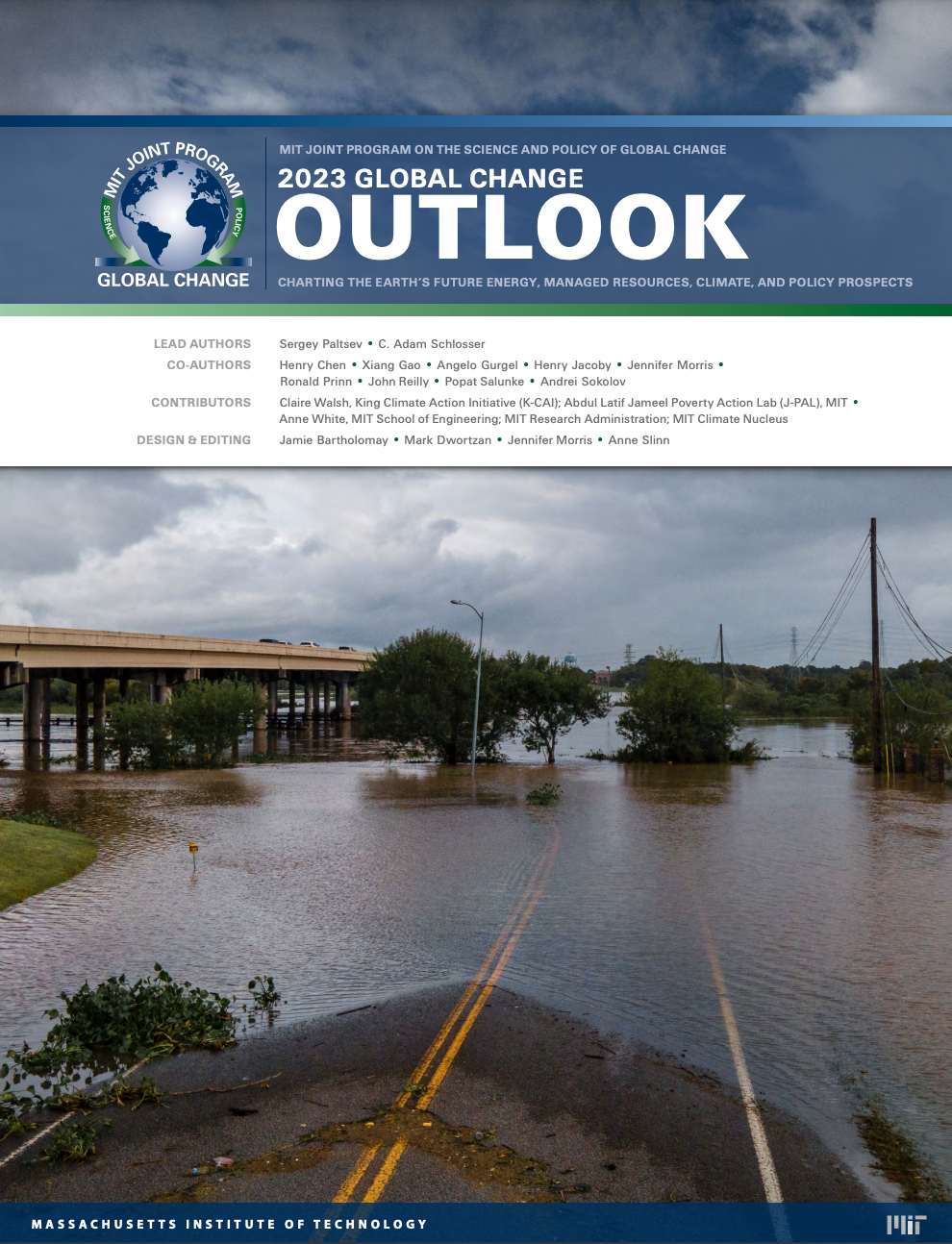DATABASE

2023 Outlook: Charting the Earth’s Future
completed
Link
globalchange.mit.edu
Abstract
The 2023 Global Change Outlook continues a process, started in 2012 by the MIT Joint Program, of providing a periodid update on the direction the planet is heading in terms of economic growth and its implications for resource use and the environment. To obtain an integrated look at food, water, energy and climate, as well as the oceans, atmosphere and land that comprise the Earth system, we use the MIT Integrated Global System Modeling (IGSM) framework. Consisting primarily of the Economic Projection and Policy Analysis (EPPA) model and the MIT Earth System Model (MESM), the IGSM is a linked set of computer models developed by the MIT Joint Program to analyze interactions among human and Earth systems. As in our last (2021) edition, this year’s Outlook reports on projected effects of population and economic growth, technology improvements, climate policy and other factors on energy and land use, emissions and climate, and water and agriculture. An important first step toward achieving stabilization of global average temperatures at reasonable cost is the Paris Agreement, in which nearly 200 countries committed to a wide range of initial climate actions aimed at achieving that goal. For this year’s Outlook, we have invited guest contributors to offer perspectives on what’s needed to accelerate innovation in climate mitigation and adaptation. Recognizing the inadequacy of the short-term commitments to keep global warming below the long-term targets of 2°C or even 1.5°C, we explore an emissions pathway consistent with the latter goal.

